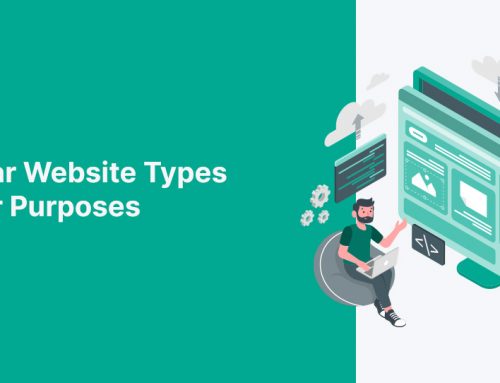The time is here. No more billboards, business cards and brochures. No more emails and infomercials. You’ve delayed it for long enough, made excuses and protests and phone calls. But the universe (or the internet) has finally caught up to you and told you, in bold, blinking letters, that it’s time for the inevitable – it’s time to make a website.
If that sentence rings with as much familiarity as a foreign language, then you’re not alone. Thankfully, the process doesn’t have to be too daunting if you know what your website needs, and how to make it. Here are the elements that give any powerful website its pulse.
1. Home page
Your home page says a lot about you. Besides the obvious (your name, your field, your objective) it also whispers of other, more subliminal characteristics. Like your attention to detail. Your organizational skills. How much time you were willing to expend on making it.
A home page is a chance to cultivate a colorful first impression. Make sure you do that by answering the first questions someone has when visiting your website – what you do, and how you do it. Take the time to write a strong headline, ideally one dripping with keywords that will drive SEO traffic to your door. Add a subhead that really relates to your audience and use a photo or a video to appeal to their optical senses.
Make sure you humanize your brand as much as possible, and make every word here count.
2. About
This is where you get to the heart of the matter: why your brand matters. While you’re talking about your background, you’re giving people a reason to trust you. Give your about page a dose of your brand’s personality, but don’t rely on fluff.
This is where you can mention that you were voted best pizza place in the Tri-State area, or that you learned the recipe for your world-famous cannoli straight from your Italian grandmother.
Pro-tip: Skip the industry jargon. Depending on your type of platform, you can really use this page to tell a heartfelt story, incorporate engaging visuals, or do something completely unexpected. Get creative.
3. Product/Services
It’s easy to opt for generic descriptions and expect products to simply sell themselves. Unfortunately, unless your product/service is the first of its kind, the competition is intense. With so many variations of the same product, you have to work to convince people that yours is worth purchasing.
This is where your description comes in. Make sure it answers the five Ws – who the target audience is, what the product’s details are, where and when someone would use it and why it’s worth having.
When writing this, be as clever or witty as you want to be. Listing the information in sanitized bullets might work if it’s for a technical product, but writing an engaging paragraph that emphasizes your brand’s voice will likely serve you better.
4. Contact
A contact page should be, above anything else, accessible. Don’t bury it in subpages and expect users to morph into Sherlock Homes to find it. Keep it clean, crisp and fill it with the essentials: your business name, address, telephone, email and social media links.
Make sure the featured number is always manned and functioning, because nothing is worse than losing a potential client to technological difficulties. Including a map will definitely work to your benefit, especially if you own a local business.
5. Testimonials
A testimonials page lets you showcase the best aspect of your brand – the people it’s touched. We tend to judge products by what other have to say to say about them. Most of the time, it’s those ratings and reviews that factor into our ultimate buying decisions.
Try to be as visual as possible in your testimonials page by adding photos and videos. Feature people willing to use their first names, and get deep into the effect your service had on them. Code Academy does a wonderful job of this by showing a photo, quote and Q&A of people whose careers have been transformed by their service.
6. FAQ
Your FAQ page is the guidepost that users turn to when they’re lost, confused or concerned. Oftentimes people tend to ask the same questions, so laying them out on one page can be a cost-effective way of answering them.
Start off by compiling your data. Turn to your support team and see what questions they receive the most, or even have your staff create a list of potential concerns. Afterwards, choose an organized structure to feature all your answers in – if there’s a lot of information, try to divide it by content or offer a search bar. When you do write in your answers, make sure you embrace the tone you’ve established throughout the rest of your site, and always show people how they can reach out to you for more information.
7. Blog
Having a blog is like having a built-in PR team that is constantly talking you up. At the core of content marketing is a quality blog that offers insightful information about your field. This might not be easy to create with a small staff, but you can start by outsourcing a few blog posts to freelance writers to generate traffic to your website. Having an informative blog allots you expert status and installs trust in your abilities. You can certainly never go wrong with that.
Takeaway:
- Having a website for your business has never been more important
- A homepage should feature strong visuals and straightforward headlines
- Use your about page to really develop your business’ voice and persona
- A strong product/services page should effectively answer the who, what, when, where and why
- Make sure your contact page is easy to find
- Since people look to user reviews, a testimonials page is important
- Think about the type of questions most people would have about your products and answer them in a FAQ page
- Use a blog to provide essential information about your field and drive traffic to your website


![How to Make Your Wuilt Website [with Steps]](https://25457140.fs1.hubspotusercontent-eu1.net/hub/25457140/hubfs/Imported_Blog_Media/37-En-header-500x383-Oct-02-2023-10-57-54-4143-AM.jpg?width=500&height=383&name=37-En-header-500x383-Oct-02-2023-10-57-54-4143-AM.jpg)





Leave A Comment